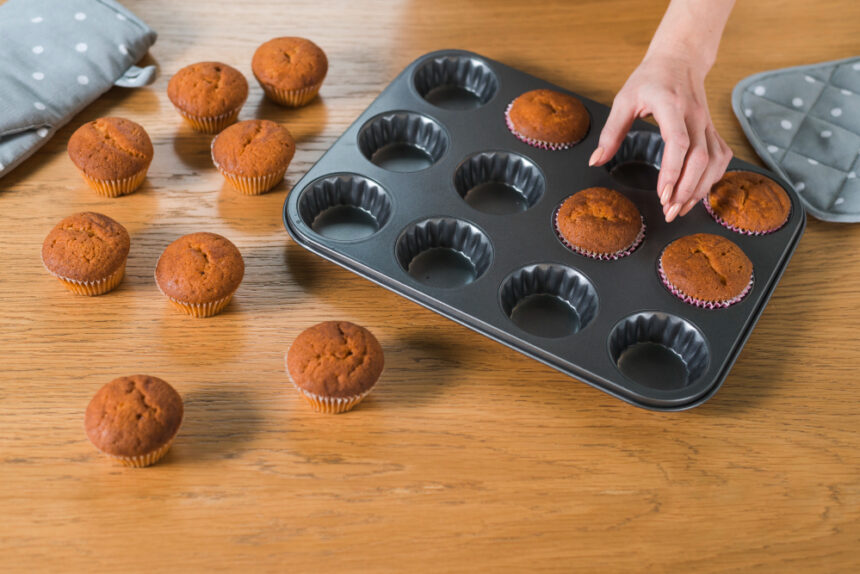Baking is a delightful art, and when it comes to creating the perfect desserts, using the right kitchen items can make all the difference. One essential tool for any baker is the cake mold. Whether you are an experienced pastry chef or a novice home baker, a cake mold is a versatile piece of kitchen equipment that ensures your cakes bake evenly and maintain their shape. This article will guide you on how to use a cake mold to bake perfect desserts every time, with a few helpful tips along the way.
Choosing the Right Cake Mold
Before diving into the baking process, it’s important to select the appropriate cake mold for your recipe. Cake molds come in various materials, shapes, and sizes, each offering unique advantages. Common types of cake molds include round, square, bundt, and loaf pans, as well as decorative molds for special occasions. Your choice of cake mold should complement the dessert you’re preparing.
When selecting a cake mold, consider the material. Cake molds can be made from a variety of materials, including non-stick pans, ceramic cookware, and granite cookware. Non-stick cookware is particularly popular because it makes it easier to remove the cake once it’s baked, ensuring that the cake retains its shape and texture. Ceramic cake molds also provide even heat distribution, allowing the cake to bake uniformly. Granite cookware, on the other hand, is known for its durability and ability to conduct heat evenly, providing excellent results for many types of cakes.
Preparing Your Cake Mold
Once you’ve chosen the right cake mold, the next step is preparing it for baking. Even with non-stick cake molds, it’s essential to grease the mold before pouring in your cake batter. This step ensures that the cake doesn’t stick to the sides of the mold, making it easier to remove once it’s baked.
For greasing, you can use butter or oil, and if you prefer a non-dairy option, vegetable oil works just as well. To ensure thorough coverage, use a pastry brush or a paper towel to coat the mold evenly. For added protection, you can also dust the greased mold with a light layer of flour or use parchment paper. This step is especially crucial when using ceramic cookware, as it prevents the cake from sticking to the mold’s surface.
Filling the Cake Mold with Batter
With the mold prepared, it’s time to add your cake batter. Make sure to only fill the mold halfway to two-thirds full. This gives the batter enough room to rise during baking without overflowing. If you overfill the mold, the batter may spill over and create a mess in your oven, potentially ruining the cake and affecting the taste.
When filling the mold, try to pour the batter evenly, ensuring that it spreads out smoothly across the base. You can gently tap the mold on the counter to help level the batter and release any air bubbles that might cause uneven baking.
Baking the Cake
Baking times can vary depending on the type of cake mold and the recipe you’re following, so it’s important to stick to the recommended temperature and time. Most cakes are baked at temperatures ranging from 325°F to 375°F (163°C to 190°C). For best results, preheat the oven to the desired temperature before placing the cake mold inside. This ensures that the cake starts baking immediately, resulting in a perfect rise.
If you’re using a non-stick pan or a ceramic saucepan, be aware that these materials tend to heat more evenly, so you may need to check the cake a few minutes before the recommended baking time is up to prevent over-baking.
To check if your cake is done, use the classic toothpick test. Insert a toothpick into the center of the cake—if it comes out clean or with a few moist crumbs, the cake is ready. If there’s still wet batter on the toothpick, continue baking for a few more minutes before testing again.
Cooling and Removing the Cake from the Mold
Once the cake is fully baked, allow it to cool in the mold for about 10-15 minutes. This cooling period helps the cake firm up, making it easier to remove from the mold. After cooling, carefully run a knife around the edges of the cake to loosen it from the mold. This step is particularly important if you’re using a cake mold made of ceramic cookware or granite cookware, as it may require a little more effort to release the cake.
Once the cake has been loosened, flip the mold over onto a cooling rack or serving dish. Gently lift the mold away from the cake, ensuring that it doesn’t break or crumble. If you used parchment paper, simply pull the paper away to reveal your perfectly baked cake.
Tips for Baking Perfect Cakes Every Time
- Use the Right Cake Mold: As mentioned, choosing the right mold is crucial. Non-stick cake molds are excellent for easy release, but ceramic cookware and granite cookware offer great durability and even heat distribution.
- Grease the Mold Properly: Even if you’re using a non-stick pan, greasing the mold ensures easy removal and helps avoid sticking.
- Preheat the Oven: Always preheat the oven to the correct temperature before baking your cake. This ensures that the cake bakes evenly from the start.
- Monitor the Cake Closely: Cakes can easily over-bake or burn if not monitored carefully. Use the toothpick test to check for doneness.
- Don’t Overfill the Mold: Allow room for the cake to rise. Overfilling can cause messy spills and uneven baking.
- Allow the Cake to Cool: Let the cake cool in the mold before attempting to remove it. This step is especially important for delicate cakes or cakes made in a pressure cooker or other types of cookware set.
- Use Quality Kitchenware: High-quality kitchen items, like non-stick pans, ceramic saucepan, and frying pans, can make a noticeable difference in your baking results. These tools ensure even cooking and help achieve the perfect texture.
Conclusion
Using a cake mold to bake perfect desserts is an essential skill for any baker, whether you are making a simple sponge cake or an elaborate layered creation. By choosing the right mold, properly preparing it, filling it with batter just the right amount, and following proper baking techniques, you can create cakes that rise beautifully, bake evenly, and come out of the mold perfectly.
Remember that the key to success in baking lies not only in the recipe but in the quality of your kitchen equipment. From your cake mold to your cookware set and non-stick cookware, investing in high-quality kitchenware ensures that you’ll be able to bake perfect desserts time and time again. With these tips, you’re now ready to create delicious, perfectly baked cakes that will impress your friends and family every time you serve them. Happy baking!
Read more blogs on techicient.com






